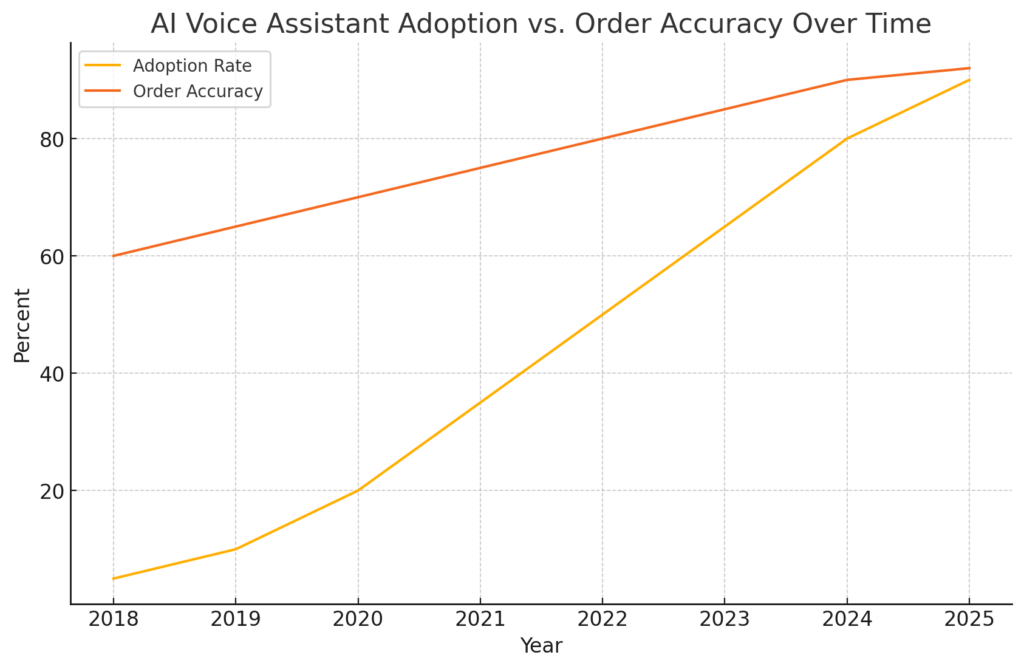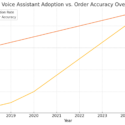Introduction
As labor challenges and rising wages squeeze margins, quick-service and casual dining operators are turning to voice AI and automation to streamline drive-thru and call-center orders. Major chains like Wendy’s, Taco Bell and Pizza Hut are piloting conversational agents that can take orders, handle customizations and even suggest upsells — all while maintaining consistent tone and speed.
Why Voice AI Matters for Restaurants
Adopting AI-driven ordering systems addresses two pressing needs:
- Labor efficiency: Beyond simply replacing staff, voice AI helps reduce stress and burnout by handling repetitive tasks, letting human teams focus on in-store experience and food prep.
- Revenue growth: Consistent upselling, predictive menu suggestions and dynamic menu optimization drive higher average check sizes and lower waste.
Recent Industry Momentum
- Strategic partnerships: Yum! Brands teamed with Nvidia to bring AI ordering to 500 Taco Bell, Pizza Hut and KFC locations in 2025 (businessinsider.com).
- Rapid scaling: Wendy’s plans to deploy its FreshAI voice assistant at up to 600 drive-thrus by year-end, with reported accuracy improving from 70% to over 90% (businessinsider.com).
- Omnichannel reach: Innovations now span call-to-order, text-to-order and in-car voice experiences, thanks to platforms like SoundHound’s Polaris model (investors.soundhound.com).
Technical Insight: Adoption vs. Accuracy Over Time

This chart highlights how deployment rates among major chains have climbed from under 10% in 2018 to nearly universal adoption, while average order accuracy has improved from around 60% to over 90%.
Best Practices for Operators
- Start small: Pilot in high-traffic locations to gather real-world accuracy data.
- Monitor and iterate: Use post-order analytics to identify common misrecognitions and refine voice models.
- Integrate user feedback: Offer easy fallback to human agents for complex orders and use that data to retrain your models.
- Maintain transparency: Inform customers when they’re speaking to an AI assistant to build trust.
Looking Ahead
Voice AI is no longer a novelty. Restaurants that leverage it strategically — focusing on seamless integration, data-driven optimization and customer experience — will gain a clear edge in speed, profitability and guest satisfaction.
Drafted by Vertivine’s AI insights team.








Sorry, comments are closed for this post.